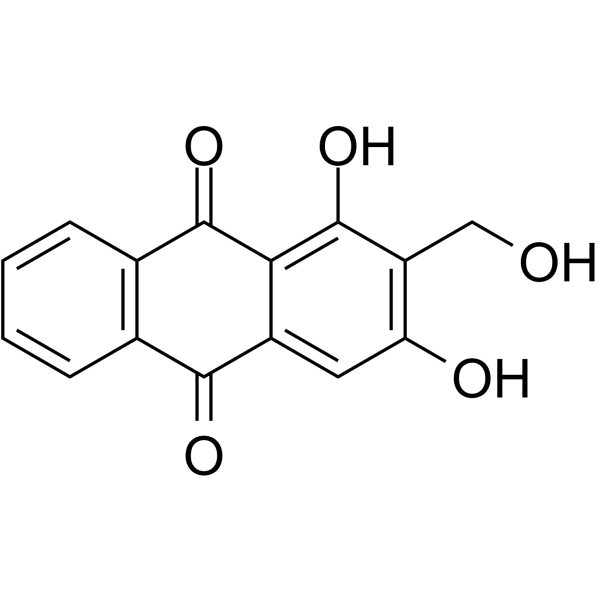All AbMole products are for research use only, cannot be used for human consumption.

Lucidin (NSC 30546) is a natural component of Rubia tinctorum L. lucidin is mutagenic in bacteria and mammalian cells. IC50 Value: Target: in vitro: Lucidin was mutagenic in five Salmonella typhimurium strains without metabolic activation, but the mutagenicity was increased after addition of rat liver S9 mix. In V79 cells, lucidin was mutagenic at the hypoxanthine-guanine phosphoribosyl transferase gene locus and active at inducing DNA single-strand breaks and DNA-protein cross-links as assayed by the alkaline elution method. Lucidin also induced DNA repair synthesis in primary rat hepatocytes and transformed C3H/M2-mouse fibroblasts in culture. HPLC analysis of 32P-labelled DNA adducts revealed a peak co-migrating with an adduct obtained after in vitro treatment of deoxyguanosine-3'-phosphate with lucidin. in vivo: Dose-dependent increases in benign and malignant tumour formation were observed in the liver and kidneys of treated animals. 32P-post-labelling analysis showed an increase in the overall level of DNA adducts observed in the liver, kidney and colon of rats treated with 10% madder root in the diet for 2 weeks. Toxicity: lucidin is mutagenic in bacteria and mammalian cells. Clinical trial:
| Molecular Weight | 270.24 |
| CAS Number | 478-08-0 |
| Solubility (25°C) | DMSO 6.67 mg/mL |
| Storage |
Powder -20°C 3 years ; 4°C 2 years In solvent -80°C 6 months ; -20°C 1 month |
| Related Others Products |
|---|
| 4-O-Galloylalbiflorin
4-O-Galloylalbiflorin is a natural product that can be derived from the root of Paeonia lactiflora pall. |
| Licoricesaponin E2
Licoricesaponin E2 is a triterpene saponinthat can be found in Glycyrrhiza inflata. |
| Uralsaponin B
Uralsaponin B is a natural product. |
| Daturataturin A aglycone
Daturataturin A aglycone is a natural Steroids isolated from the herbs of Datura tatura. Daturataturin A aglycone can be used for research related to life sciences. |
| (4->2)-Abeo-16-hydroxycleroda-2,13-dien-15,16-olide-3-al
(4→2)-Abeo-16-hydroxycleroda-2,13-dien-15,16-olide-3-al is extracted from the unripe fruits of Polyalthia longifolia var. pendula. |
All AbMole products are for research use only, cannot be used for human consumption or veterinary use. We do not provide products or services to individuals. Please comply with the intended use and do not use AbMole products for any other purpose.


Products are for research use only. Not for human use. We do not sell to patients.
© Copyright 2010-2024 AbMole BioScience. All Rights Reserved.
